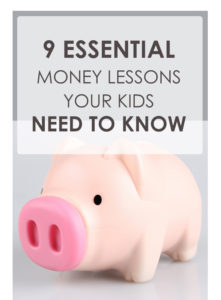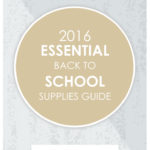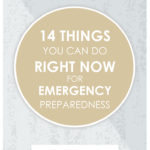
It’s never too early to teach your children about financial responsibility.
Children who learn financial literacy are more likely to carry these lessons into adulthood.
How Important Is Financial Literacy?
According to Statistics Canada, Canada’s debt-to-income ratio set a record high at 165%. That means Canadians owe $1.65 for every dollar of disposable income.
With a debt load of $1.923 trillion, a bulk of this debt came from mortgages. Consumer credit debt accounted for $573.6 million of this debt. Yikes!
Despite these statistics, money concepts are still not a part of the school curriculum. It’s up to parents to teach financial skills to give their children the best possible start in life.
Times Have Changed
Money wasn’t talked about when I was growing up. Money was considered to be a private matter.
I grew up with little knowledge or experience regarding finances. I wasn’t prepared when I approached adulthood. And I struggled.
I felt the burden of consumer debt and student loans. I had enough. I decided to learn the basics of money management.
Although I invest in my children’s college education, I knew it wasn’t enough. I didn’t want my kids to struggle like I did. So I gave them the tools to handle money wisely and confidently.
And here begins your child’s path to independence…
Be the Change You Wish to See
The first step as a parent is to be a good financial role model. Set a good example by showing your child how you manage money through budgeting and saving.
Take your children shopping and show them how to comparison shop and recognize value. Don’t make money a taboo subject – talk about it and guide your children into good habits early on.
Let’s get started with nine essential money lessons your kids need to know:
#1 – Money is Finite
This is perhaps one of the first and earliest lessons that you can teach. Children need to learn that money is a limited resource that they should spend with reason.
One of the easiest ways to do this is by allowing them to pay for their own goods. If you’re planning on buying them a small toy while you’re out, allow them to choose and pay for it instead. Give them a small amount of money ($5 is a good place to start) and allow them to choose a toy.
Even better, start your child on the money jar system (see below) and they can use money from their jars. Explain to them that toys cost various amounts of money and that once the money is gone, there is no more to spend.
It is also important that you set a good example in your own approach to saving and spending. Try to use cash to pay for items whenever possible. Let your younger children see you use physical money (rather than a debit card or credit card) to pay for an item.
This makes the lesson more tangible and easier to understand. Young children aren’t able to understand more abstract monetary exchanges like debit cards. It is important for them to see the money change hands for them to understand what is happening at the register.
In the age of instant gratification and consumerism, it’s essential to teach your kids an alternative path. The Opposite of Spoiled: Raising Kids Who Are Grounded, Generous, and Smart About Money, is a wonderful read. Written by a money columnist for The New York Times, it’s packed with tips and conversation starters.
#2 – Learn to Earn
To understand saving and spending, a child needs to first learn that money is earned. One way to teach your children is to allow them to earn money by completing chores around the house.
Young children can perform simple chores such as gathering up laundry, cleaning their rooms and setting the dining room table. For other age-appropriate chores, look here.
This allows them to learn responsibility at home as well as financial responsibility. This also teaches them that reward and responsibility usually go hand in hand.
You can also offer opportunities to earn extra money with extra chores such as yard work or washing windows.
Should I pay my child to help out?
Some parents don’t agree with associating chores with allowance. In our home, my kids aren’t paid for doing chores.
With my oldest son, I tied his allowance with chores. By the time he reached his early teens this became a problem. He expected me to pay him to help out. If extra chores came up, he wanted me to pay him. When he didn’t want to do chores, he just forfeited the money.
I soon realized this method wasn’t working for our family. Now I separate allowance from chores. Each family member contributes to household responsibilities without payment. This is much more effective. It’s also more realistic. As adults, we are not paid to clean up after ourselves.
A compromise could be allowing your child to earn extra money through extra chores. These chores would not be part of their regular responsibilities.
It is completely up to you to decide what works best for your family.
At what age should I start giving my child an allowance?
Whatever you decide, make sure that your child understands the value of money before starting an allowance. You know your child best and their level of understanding. By age six, most children have a better grasp of simple money concepts.
A great way to start with young children is to introduce them to currency. Using a playset like this, your child can identify currency and learn to make change. Another fun resource is the award-winning Money Bags educational board game. It teaches children to collect, count and manage money.
Encourage older children to look for ways to earn money outside the home such as babysitting, dog walking or snow removal.
Look for ways to nurture the entrepreneurial spirit in your children. Support ideas for small business, like starting a blog or YouTube channel, baking, making jewelry or setting up a lemonade stand.
#3 – Saving vs Spending
Once your child has begun earning an allowance, you can begin to teach them about wants versus needs. Also, the importance of saving versus spending.
Allow them to take the money they’ve earned when you go to the store. If they request to look at toys, etc., explain that they’ll have to spend their own money to get what they want. If they see an item that they can’t afford, explain to them that they can save their money to buy the item they want.
Decision-making is a large part of money management. Help your child understand how long they may have to wait to buy an item.
Explain the consequence of spending money now means waiting to have enough for the big item they want. Then, let them make the decision for themselves.
Teach Your Child To Fish: Five Money Habits Every Child Should Master is an excellent resource written by a CPA. This book teaches the importance of saving and living within your means.
#4 – Using Money Jars
Once your child has decided to save for a larger purchase, it is the perfect time to teach them about using the three jar money system.
This gives them a chance to have the satisfaction of seeing their money accumulate. This system empowers your child to take responsibility for his/her own financial decisions.
The Three Jar System:
- Spending – money in the spending jar is for immediate, short-term spending
- Sharing – money for donations or sharing with a friend
- Saving – this is for savings (you can break this down further into a fourth jar for short-term and long-term savings)
For savings, consider having them write the name of their desired item on a piece of paper. Then place it inside the savings jar so that they can see it.
This will serve as a reminder of what they’re saving for, and make impulse spending less tempting. Every time they go to the jar to pull money out for a different item, they’ll remember why it’s important to wait.
Remember, even for younger children saving can be a fun and rewarding experience. Get started with this sectioned Moon Jar + responsibility chart.
#5 – Tracking Finances
The biggest issue people have with money is not knowing where it goes. Keeping track of finances is an essential skill when it comes to money management.
Children should practice tracking money through an expense sheet and keeping receipts. Kids can use a notebook, computer or even a mobile application to help track where their money is going.

#6 – Goal Setting
It’s hard to stay on course when you can’t keep your eye on the prize. Setting goals is a huge step to financial independence. This will also reaffirm the lesson of wants versus needs.
Sit down with your child and help him/her create a wish list, and then prioritize these goals. Writing your goals down makes a plan more tangible. Your child can see the steps they need to take to reach their goals and establish a timeline to achieve them.
#7 – Banking
Most financial institutions today have a program designed to teach children about banking. Many of these programs teach more difficult lessons about interest, investing, and retirement planning.
Financial learning should be continuous education. Children should enroll in these classes starting at a young age. Teens should take classes when they’re approaching high school graduation.
One excellent program you might consider is the free Hands On Banking program. They offer lessons for kids, teenagers, and young adults that cover a variety of topics. Courses include budgeting, investing, and how to use their savings and checking accounts.
#8 – Budgeting
Once your child is older and has their own bank account, it is time to teach them how to budget.
One way to do this is by allowing them to pay for their own school lunches and supplies. You can do this by giving them a certain amount of money each month.
Explain that they need to save a portion, invest or donate a portion, and use a portion to spend on their lunches at school for the month. They should then have a small amount left for discretionary spending as well.
Explain that if they spend all their lunch money before the month is over, there will be consequences. For example, taking simple bologna sandwiches for lunch.
This also teaches your child about expense management. Many school cafeterias offer premium lunch items (such as a sub, dessert items, etc) at an extra cost.
Your child can learn that by opting to take a simpler lunch a few days a week, they can have money for the premium treats.
As they grow older, you can extend this practice to apply to items such as school clothes, uniforms, shoes, and other supplies.
Shopping is a good opportunity to experience price comparison and price matching. Working with a budget includes learning to use coupons and selecting sale items.
#9 – Interest
Another important financial concept for children to understand is interest – both on money they save and on debt they accrue.
Once your child has learned the concept of multiplication, they can learn about interest.
Many young adults will one day have to deal with the financial effects of student loan debt. They need to have a clear understanding of how debt works before they begin to accrue it.
You can begin by explaining interest rates for lenders. Tell your child that when they put their money into a bank savings account, they are, in essence, lending their money to that institution. They then own interest on that loan.
Help them shop around to several banks and credit unions to find the best interest rate. You can also compare them online at bankrate.com and creditunion.coop (US) or canadianbankrates.ca (CA).
Older children can learn the concept of compound interest and long-term savings goals. Compound interest is interest paid on both the principal and on accrued interest. The earlier you start saving, the faster your money can grow.
Next, you can give a simplified explanation of interest rates for borrowers. You can do this using an item like your credit card statement, car note, or mortgage loan paperwork.
Show them the way annual percentage rates work, and how they affect the final price of an item. In this way, they can see how paying off an item quicker often results in a lower than expected final price.
They also see the benefits of paying for an item in cash versus borrowing money for an item.
Next steps…
Some children will pick up on these lessons fast, while others may take a little longer to understand.
Older children can learn more intermediate financial concepts such as banking, interest, and investing.
You know your child best but start teaching them financial literacy as early as possible.
It’s never too late to get started either – you can start empowering your child today!
Resources
The Mint – provides tools for parents and educators to teach children money management.
Make it Count – is a program from The Canadian Securities Administrators’ (CSA). It includes family activities like going shopping or opening a bank account.
Three Jars – Save, Spend & Share – free online version of the three jar system.






